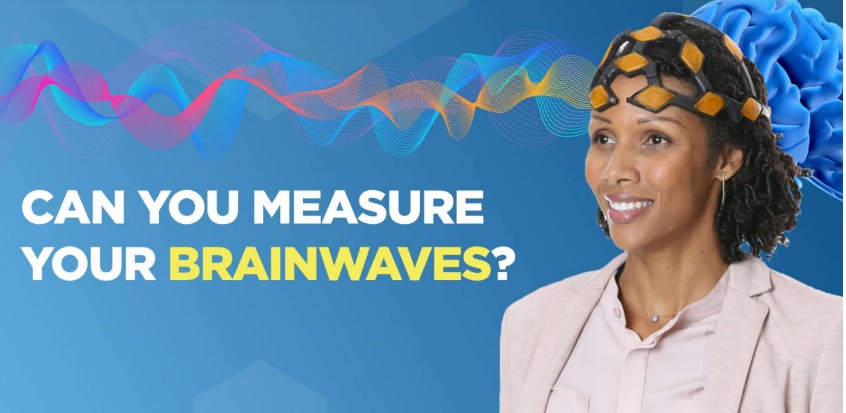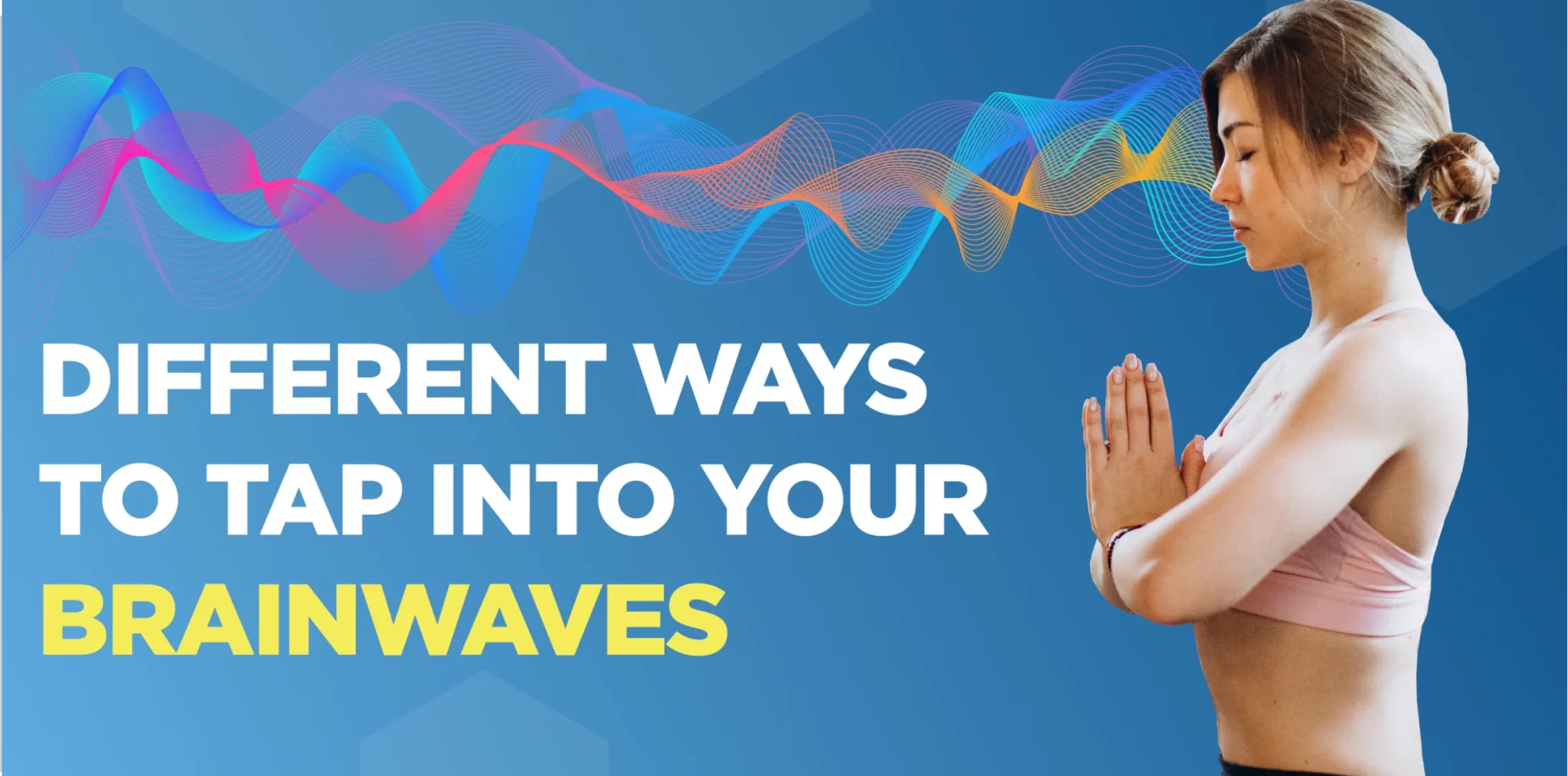If you often read blogs about concentration, sleep, and the mysteries of the mind, the concept of brainwaves may sound familiar. It might surprise you to know that scientists use these brainwaves to measure cognitive activity and elements of the mind that we can’t reach otherwise.
Despite medical advancements and current imaging techniques, the exact mechanism of the mind is still elusive and challenging to study. It is impossible to track all nerve impulses and know precisely what is happening with our brain connections. But, we can read brainwaves, and they give us many clues and a live insight into the mind at work.
If you’re new to the concept or have heard about it before, this article will be helpful to understand brainwaves, how to measure them, and potentially, how to improve your brain connectivity.
How does the brain work?
The average human brain contains 86 billion neurons. These neurons communicate with one another to operate every part of your life. How the brain does this is it sends chemical and electrical signals from neuron to neuron using neurotransmitters. These oscillating signals run at different frequencies depending on the current “state” of the brain.

Brainwaves are electrical readings that reflect brain activity. These electrical impulses can vary in speed and are measured in cycles per second, or hertz (Hz). You can detect a person’s mental state and measure the electrical activity in specific brain areas related to a particular brain function while looking at the rainwave activity. You can think about them as the ripples you can see on the water surface after throwing stones (1). There is always a presence of each brainwave in different parts of the brain, but some will be more pronounced than others depending on whether that person is mentally engaged or sleeping. The amount of a specific wave in a particular region of the brain might indicate a learning disability or even a
neurological injury, which we are exploring in this article.

The most commonly measured brainwaves are Delta, Theta, Alpha, and Beta. Each wave type indicates a level of activity that is occurring in the brain.
If you get a brainwave scan, these are the type of waves your doctor will read (2):
Delta Brainwaves (1 – 4 Hz) – Deep Sleep
Delta Waves are the slowest type with the highest amplitude (wavelength). These brainwaves are most commonly observed in people during deep sleep when no dreaming occurs. They are primarily located in the brain’s right hemisphere during stages 3 and 4 of sleep and increase in intensity as the sleep becomes more profound. If you’ve ever awakened confused, irritable, and disoriented, this is likely because you woke up in the middle of your delta brainwave sleep stage.
Besides favoring deep sleep, reaching this mental state has many benefits (5):
Although Delta waves are vital to deep, restorative sleep, if they’re prominently experienced during the waking hours, they can affect brain performance. Therefore, excessive Delta waves during the day have been associated with brain injuries, learning problems.
Theta Brainwaves (4 – 7 Hz) – Deep Meditation and First Stages of Sleep
The next step up from Delta waves are the Theta Brainwaves. They are particularly prevalent in the first stage of sleep and when people are daydreaming. For example, Theta waves are present when you wake up from a very light dream where you’re not yet asleep nor fully conscious. In this light sleep, you can even have the sensation of dreaming or sensory hallucinations.
Theta waves are also associated with REM sleep, as we have the most vivid dreams. In the waking state, Theta Waves are most profound during meditation, spiritual activities, and deep reflection. Great ideas can come from this state as people become more connected to their inner selves. If you have ever been driving down a highway and found yourself in a state of mind where the last few miles went by in the blink of an eye, then you were in a mixture of Theta and Alpha states.
When you’re fully awake, the right proportion of theta waves has a few benefits:
Like Delta waves, excessive Theta waves during the waking hours could indicate issues with brain performance. These range from head injuries to neurological deficits and an inability to focus and maintain attention. The ratio of Theta waves to Beta waves indicates how much RESTING brainwave activity we have (Theta) versus how much ACTIVE brainwave activity we have (beta). This is represented as Theta/Beta Ratio.
Alpha Brainwaves (7 – 12 Hz) – Relaxation
Alpha waves are usually found in the brain’s occipital lobe (backside of the brain) when patients are awake with their eyes closed. Opening our eyes would reduce the intensity of alpha brainwaves. Unlike Delta and Theta waves, these Alpha waves are not present when we are asleep.
During the day, after a mental activity, the period of time right after the task is completed and you are relaxing is a state of Alpha. Another example would be walking through a garden in a contemplative state.
Alpha brainwaves also relate to visualization and daydreaming. They increase as we reach a relaxed state of mind, and creative individuals have a higher ratio of alpha brainwaves. However, we can all increase alpha brainwaves by using visualization techniques, practicing meditation, and using deep breathing exercises.
Using alpha waves brings out several benefits:
As Alpha waves are also indicative of a relaxed state of mind, an excess of these waves in the frontal lobes has shown to indicate ADHD and depressive symptoms.
Beta Brainwaves (12 – 40 Hz) – Conscious Reasoning
These brainwaves are the 2nd fastest type of brain frequency and most accurately associated with the engaged brain.
You will likely display Beta brainwaves when solving complex math problems or a puzzle. Logical thinkers tend to have a higher rate of Beta brainwave activity depending on their cognitive abilities. Interestingly, Beta brainwaves show an increase as we grow older.
The downside of Beta brainwaves is that too much causes anxiety and stress. An intense Beta brainwave session, like taking an IQ test, may sometimes result in a mild headache as the blood flow to the brain increases. Still, you can seize the positive aspects and avoid the negative part of Beta brainwaves by taking breaks between sessions of deep concentration. The benefits of maximizing Beta brainwaves include:
Bonus Brainwave: Gamma Waves (40 – 70 Hz)
An interesting type of brainwave, and one that is less talked about, is the Gamma brainwave.
These waves reflect a conscious awareness of what is around us and relate to feelings of happiness and compassion. They are also prevalent while processing information and learning at a high level. Think about how you feel when you’re immersed in a complex situation or listening to a subject matter expert on a topic of great interest to you. This is when the brain feels like it’s firing on all cylinders.”
Currently, these waves are difficult to measure with current EEG technology, but in the future, researchers will study these more closely as they’re an integral part of what makes us human.
Benefits of Gamma brainwaves include (4):

In a nutshell, Alpha brainwaves relate to creativity and daydreaming, Beta waves are produced in the middle of deep thinking, Delta/Theta waves can be found during deep sleep, and Gamma waves are associated with problem solving, happiness, and compassion.
Each brainwave has its associated use and helps support the state of mind required for the task at hand. All of us display each one of these waves, but at a different proportion. Depending on your psychological traits and abilities, you could have a predominant brainwave or two.
Very creative people have a predominance of Alpha waves. As we grow older, the rate of Alpha waves reduces while Beta waves increase in frequency. More Beta brainwaves relate to intelligence, and problem solving capacity, as our lives demand more of this type of thinking. But we also need Delta waves to sleep, restore and repair the wear and tear we put on our brains each day. On the flip side, we need to engage our Gamma waves to feel engaged, happy, and content.

For generations, scientists have wanted to look through the skull of a functioning brain. Not surprisingly, this was literally done by a scientist named Hans Berger, who recorded brain pulsations through a hole in the skull of one of his patients and published a monograph of his studies in 1904.
Luckily, we now have harmless ways to record brain activity. They are more accurate (and much less painful) than Berger’s experiments and provide helpful insight into the brain as a whole.
You’re probably familiar with the word EEG, which is short for electroencephalogram. It is a device that detects electrical activity by simply placing electrodes in contact with the scalp. Each electrode is very sensitive to changes in voltage and detects neural oscillations that we translate into brainwaves.
But we can go one step orward by recording the brain’s electrical signals and correlating this data with other measurements. That is what the WAVi machine does. It features an EEG scan, heart rate variability measurements, visual and auditory ERP (event related potentials), and much more. Altogether, a WAVi machine gives you a comprehensive insight into how your brain works and reacts to different stimuli.

What can you do to modulate your brainwaves?
You can buy a biofeedback device, which uses a very complex platform to detect changes in brainwaves and train your brain. But you can also use simple ways to regulate your brain activity through meditation, binaural beats, or just listening to music.
Meditation:
One of the most accessible tools to alter your brainwaves is meditation. This technique increases your theta and alpha waves. As such, meditation is associated with visualization, creativity, and the development of empathy and compassion. Depending on the type of meditation, you could also boost your beta brainwaves if you’re practicing your problem-solving skills in the middle of the session (5).
Binaural beats:
These are subjective hearing sensations obtained when one ear listens to one tone and the other listens to another with a slightly modified frequency. They slow down the brainwaves and promote deep states of relaxation and sometimes sleep. They are helpful to calm down the mind and reduce anxiety and stress levels (6).
Music:
Music therapy affects the alpha oscillations of the brain. It promotes visualization and creativity, especially if we do the exercise of imagining music instead of only listening. Certain studies also show an increase in Beta activity, but the most common effect is seen in Alpha waves (7).
Supplements:
Your brain operates on the fuel (nutrients) you give it. As life happens there will be times when we are deficient or not operating at full capacity.
1.
https://www.cambridge.org/core/journals/acta-neuropsychiatrica/article/brainwaves/9FE084B0ECD26984D551F3C72CDA6F10
2.
http://www.edumed.org.br/cursos/neurociencia/MethodsEEGMeasurement.pdf
3.
https://www.nature.com/articles/nn.2253
4.
https://link.springer.com/content/pdf/10.1007/s10339-009-0352-1.pdf
5.
https://link.springer.com/chapter/10.1007/978-3-319-58466-9_25
6.
https://assets.thegrommet.com/product-comments/Sleep+Shepherd/Influence-on-EEG-Readings.pdf
7.
https://www.ncbi.nlm.nih.gov/pmc/articles/PMC6130927/